5 Indoor Walking Tricks That Build Better Stamina Than Treadmills After 50
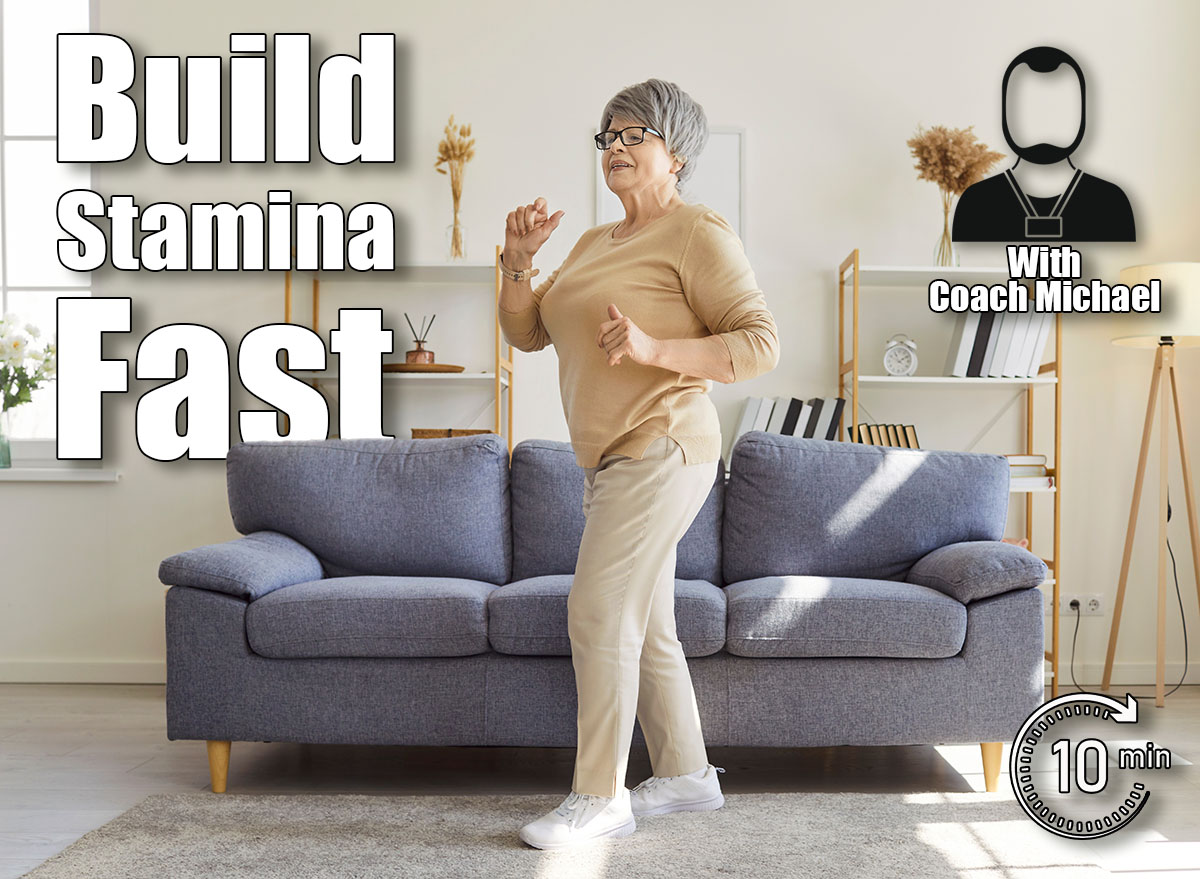
Walking up stairs shouldn’t leave you breathless. Carrying shopping bags or keeping up with grandchildren shouldn’t feel impossible. Yet for many people over 50, these everyday activities have become exhausting challenges that leave them feeling older than their years.
I’ve worked in the fitness industry since I was in my teens and completed my personal training qualifications over 35 years ago. I’ve had countless people in their 50s and older come to me with the belief that it’s impossible to build stamina at their age. It’s heartbreaking to hear that lack of belief and it’s also completely wrong. People believe that they are too old, too out of shape or too lazy to be able to get their energy back but it couldn’t be further from the truth.
Without exception, everyone has the capacity to improve. Building stamina after your fiftieth birthday isn’t about running marathons or spending half your life in the gym, it’s about smart, consistent movement that works around your schedule. Indoor walking patterns are a phenomenal method for rebuilding cardio fitness safely and effectively and most people have never heard of them! Here’s how these simple patterns can help you reclaim your energy and stamina in just 30 days.
You’re Facing Common Challenges That Hold You Back

I’ve spent the majority of my career working with older adults and I see the same frustrating cycle repeatedly. People come to me because activities that never used to be an issue for them – like walking up stairs, carrying shopping, or keeping up with their grandkids – now leave them breathless and exhausted.
Physical decline itself isn’t actually the biggest challenge – it’s how we respond to it. We start avoiding anything that makes us feel winded. Less activity means stamina gets worse which leads to more avoidance – it’s an awful cycle. Before we know it, our worlds have shrunk massively without us even realising it happened.
People often try to jump straight back into exercise at the levels they remember operating at 20 years ago – thinking they need to walk for miles and miles or do intense workouts to see any kind of results. This just leads to exhaustion, feeling discouraged and often giving up within a couple of weeks.
Another big hurdle is the all or nothing mindset. People tend to believe (or are led to believe by social media!) that they need to be a member at an expensive gym or if they can’t commit an hour or more at a time then they won’t be able to make a difference. When life gets busy – and life ALWAYS gets busy – they feel like failures and end up stopping completely. After 50 years old it’s consistency that builds stamina, not intensity.
Indoor Walking Patterns Work Better Than You Think

Indoor walking patterns remove every excuse that stops people from exercising consistently. The weather doesn’t matter, you don’t need any special equipment, and you can do them in your pyjamas if you want to.
The controlled environment lets you focus completely on movement and breathing without worrying about uneven pavements, traffic, or getting caught in the rain halfway through. When you’re rebuilding stamina, external stress is the last thing you need disrupting your routine.
These patterns also allow precise progression. You can gradually increase duration, pace, or complexity in ways that outdoor walking makes difficult to measure. Plus, you can pause whenever needed without worrying about how you’ll get home.
Privacy matters enormously too. Many of my clients over 50 feel self-conscious about their current fitness level. Indoor patterns let them work at their own pace without feeling judged. They build confidence alongside stamina, which is equally important for long-term success.
5 Indoor Walking Patterns to Build Stamina After 50
The Living Room Loop Pattern
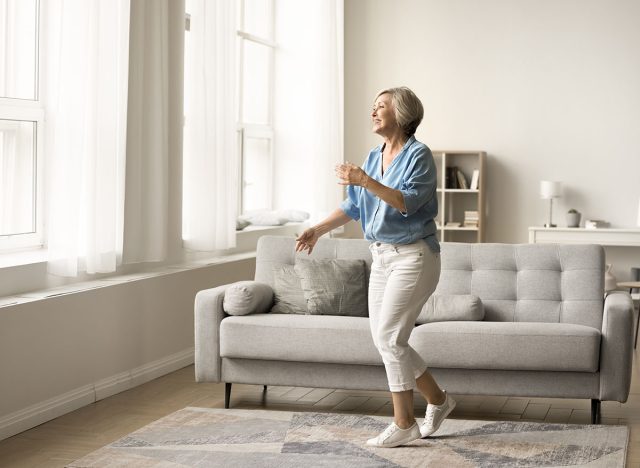
How to do it:
- Create a walking path around your main living space using furniture as waypoints
- Walk around your sofa, circle the coffee table, move around chairs
- Aim for a continuous loop of 20-30 steps
- Start with 5 minutes of steady walking at a comfortable pace
- Keep your shoulders back and let your arms swing naturally
- Every 2 minutes, add 10 marching steps in place to break up the rhythm
Beginner modification: Use furniture for light support when needed and start with just 3 minutes. If you feel dizzy, slow down or pause briefly.
Avoid these mistakes: Don’t walk too fast initially – you’ll get breathless quickly. Avoid staring at your feet constantly as this throws off your balance. Don’t grip furniture tightly, just let your hand brush against it for stability if needed.
Stair Climbing Intervals
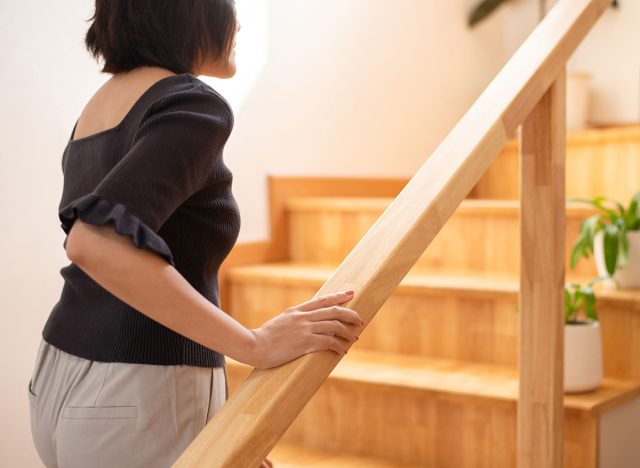
How to do it:
- Walk up 3-5 steps at a normal pace, then walk back down
- Rest for 30 seconds between each rep
- If you have a full staircase, walk up halfway, come back down, then rest
- Start with 5 repetitions and build up to 10
- Use the handrail for balance, not for pulling yourself up
- Focus on letting your legs do the work
Beginner modification: Start with just one step up and down, or use the bottom step for step-ups instead of climbing. Keep one hand on the handrail throughout.
Avoid these mistakes: Don’t take steps too quickly or skip rest periods. Avoid leaning heavily on the handrail – your legs need to do the work. Don’t look up or down the entire staircase, which can feel overwhelming.
Kitchen Circuit
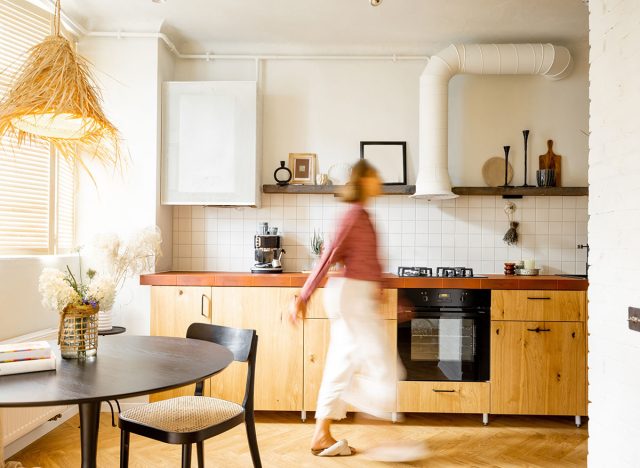
How to do it:
- Use your kitchen’s natural layout for a stamina circuit
- Walk from counter to counter continuously
- Include light activities: opening cabinets, reaching for shelf items, or calf raises while holding counter edge
- Continue moving around your kitchen space for 10 minutes
- Every 2 minutes, add 20 seconds of marching in place or gentle side steps
- Focus on continuous movement with brief activity breaks
Beginner modification: Focus on just walking between counters without additional movements. Keep one hand on the counter for stability if needed.
Avoid these mistakes: Don’t make the circuit too complex with unnecessary reaching or bending. Avoid rushing between stations. Don’t turn too quickly, which can cause dizziness.
Hallway Shuttles

How to do it:
- Use your longest indoor space for back-and-forth walking
- Walk from one end to the other at a moderate pace
- Turn around carefully and walk back
- Continue for 8-10 minutes, counting each length
- Every 5 lengths, pause for 30 seconds
- Do arm circles or gentle stretches during pauses
- Gradually pick up your walking pace every few lengths
Beginner modification: Walk shorter distances or use wall support when turning. Start with 5 minutes and increase gradually.
Avoid these mistakes: Don’t walk too close to walls or furniture, creating trip hazards. Avoid quick pivots at each end – make wide, controlled turns. Don’t set overly ambitious distance goals initially.
Multi-Level Movement
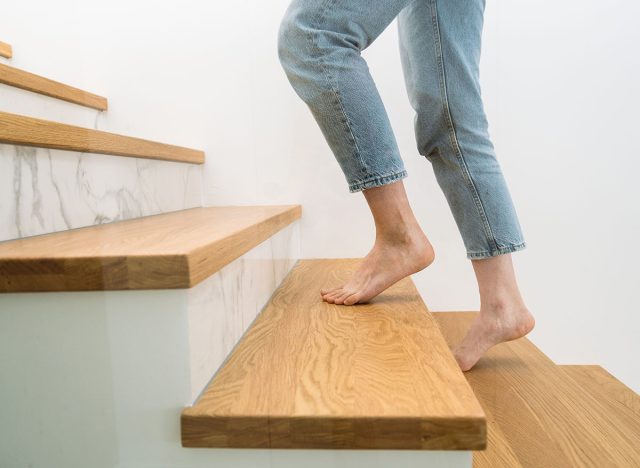
How to do it:
- Combine different levels of your home or use a sturdy step
- Walk on your main level for 2 minutes
- Change elevation (up or down stairs, or step onto platform)
- Walk for 1 minute at the new level
- Return to main level and repeat
- Continue this pattern for 15 minutes total
- The elevation changes challenge your cardiovascular system more than flat walking
Beginner modification: Use just one step up and down instead of full stairs. Reduce to 10 minutes total with longer rest periods.
Avoid these mistakes: Don’t change levels too frequently – this becomes exhausting rather than stamina-building. Avoid rushing transitions between levels. Skip this pattern entirely if you have balance issues until you’ve built confidence with other patterns.
How to Structure Your Weekly Routine

Getting started:
- Begin with 3 days per week (Monday, Wednesday, Friday works well)
- Use different patterns each day to prevent boredom
- Rest days between sessions keep you fresh
- Keep weekends free for other activities
Weekly progression:
Weeks 1-2:
- Choose one pattern per session
- Focus on getting comfortable with movements
- Don’t worry about duration or intensity yet
Weeks 3-4:
- Start combining two patterns in one session
- Example: 5 minutes Living Room Loops + 5 minutes Kitchen Circuit
- Build familiarity with transitions
Week 5 and beyond:
- Add a fourth day if you’re feeling good
- Increase each pattern’s duration by 1-2 minutes weekly
- Listen to your body above everything else
Important reminder: Some weeks you’ll feel stronger and can push harder. Other weeks, maintenance is enough. Consistency matters more than perfection.
What to Expect After 30 Days
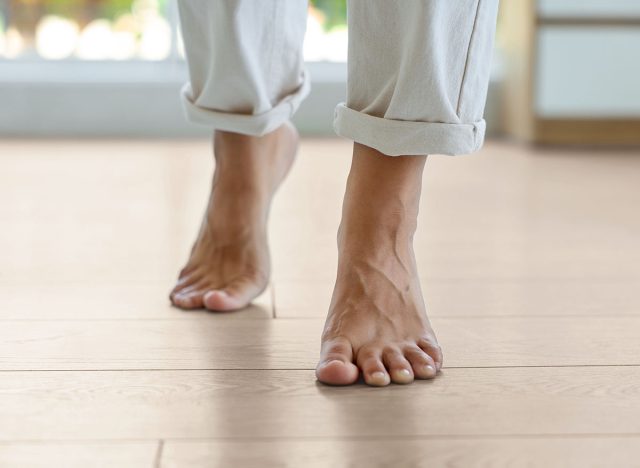
After working with hundreds of people through this approach, I can tell you that the changes are both measurable and life-changing, but they happen gradually.
Week 1: Most people notice they complete the patterns without getting as winded. This isn’t improved stamina yet – it’s your body becoming more efficient at the movements.
Weeks 2-3: You’ll likely notice that climbing stairs no longer leaves you breathless. Walking longer distances – through large shops or to the local post office – becomes easier.
After 30 days: Most people can increase their walking pattern duration by 50-75%. If you started with 5-minute sessions, you’ll likely be comfortable with 8-12 minute sessions.
Real-life improvements:
- You’ll find yourself taking stairs instead of elevators without thinking about it
- Walking to local destinations becomes enjoyable rather than exhausting
- Playing with grandchildren won’t leave you needing to sit and recover
- Household tasks become less tiring
The confidence factor: What surprises people most is the confidence boost. When you’re not worried about getting out of breath or tired, you start saying yes to activities you’d been avoiding. That mental shift is often more valuable than the physical improvements.
Looking for easy ways to lose fat? Here’s How Long Your Walking Workout Should Be To Shrink Belly Fat.